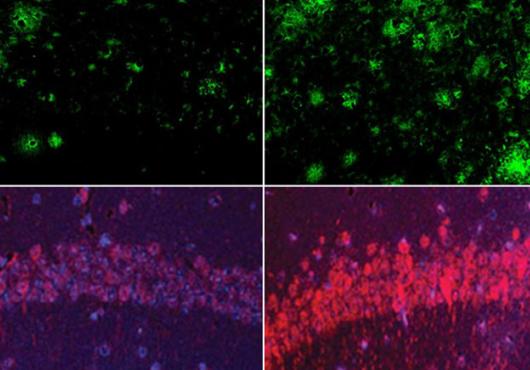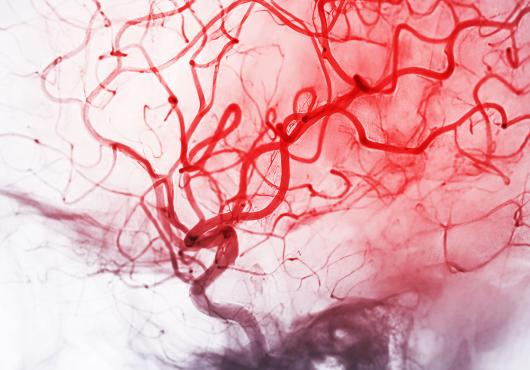In September, researchers had bad news for the 97 volunteers in the Boston arm of a promising HIV/AIDS vaccine study: the vaccine did not seem to work. Worse, the intervention appeared to increase susceptibility to HIV infection in some of the 3,000 people enrolled at sites in North and South America, the Caribbean, and Australia.
The interim data stunned people. After more than 20 years of committed scientific effort, the STEP trial was only the second candidate HIV vaccine of any kind to complete efficacy testing in people, and the second to fail. Hopes had been high. When they work, vaccines are the most cost-effective known intervention to prevent disease and death.
“It is disappointing in large measure because of the terrible need,” said Raphael Dolin, the Maxwell Finland professor of medicine (microbiology and molecular genetics) at HMS and head of the Harvard HIV Vaccine Trial Unit, based at Brigham and Women’s Hospital, Fenway Community Health, and Beth Israel Deaconess Medical Center. More than 33 million people are estimated to be infected worldwide with HIV, with 40,000 new cases every year in the United States. Globally, antiretroviral therapy reaches about one in every six infected people.
The setback has sparked passionate debate about the future direction of HIV vaccine research. Some insist the failed study shows the need to reemphasize basic research and develop better animal models that can elucidate the necessary immunological mechanisms. Others contend it shows the crucial role of iterative clinical trials, with safeguards, in ultimately determining what will work—or not—in people.
“The easy vaccines have been made,” said HSPH dean Barry Bloom, who is working on a way to deliver a tuberculosis vaccine via inhaled nanoparticles. “HIV is almost certainly the most challenging of any. It will require more sophisticated science than we have ever had to do. The old vaccines are simply the pickled or ground-up virus or bug. We’ve tried that, and it hasn’t worked.”
HIV has defied the proven empiric routes to vaccine development: live attenuated virus (mumps, measles, and the nasal flu vaccine); killed virus (used in the original Salk poliovirus vaccine and annual flu shots); recombinant viral proteins (hepatitis B vaccine); and viruslike particles (papillomavirus).
“My work has shown live attenuated strains of SIV can provide strong protection against rigorous challenge by pathogenic strains of SIV,” said Ronald Desrosiers, director of the New England Primate Research Center and HMS professor of microbiology and molecular genetics. The approach is too dangerous to test in people; a small percentage of the vaccinated monkeys have died from SIV-related disease. But the SIV model provided proof of concept that a vaccine may be possible and continues to generate a rich array of scientific insights into the complex immunology underlying the protection. No one actually knows the relative importance of antibodies and cellular and innate immune responses for protection against SIV or HIV.
The big problem is HIV’s fast and error-prone replication, which generates staggering diversity, even within one person. Chronically infected people have loads of HIV antibodies, but by the time a person’s own immune system makes more of each antibody, the virus has mutated beyond their reach.
“You can be exposed to hundreds of immunologically distinct versions of HIV if you have unprotected sex with a chronically infected partner,” said Stephen Harrison, a Howard Hughes investigator and the Giovanni Armenise–Harvard professor of basic biomedical science at HMS. Harrison and his colleagues are searching for unchanging elements on the HIV virus envelope that might serve as templates for an immunogen that can stimulate broadly neutralizing antibodies.
Lab studies have found rare broadly neutralizing antibodies in the serum of infected people. Their role in the course of infection is unknown, but researchers hope to harness and expand their power to fight HIV. Two of the antibodies appear to target the fusion apparatus in a transient stage when the virus has attached to the host cell and is poised to open a channel to inject its deadly viral cargo, according to a March 11 paper in Proceedings of the National Academy of Sciences from the lab of Bing Chen. “The next question is, can we design a construct to mimic the neutralization-relevant conformations and induce these types of antibody responses?” asked Chen, HMS assistant professor of pediatrics at Children’s Hospital Boston.
Other clues may come from a subset of people, termed HIV controllers, who maintain virus loads below the limits of detection by the most sensitive commercial assays available, some now for more than 25 years.
“To me, elite controllers represent what we’re trying to do with the HIV vaccine,” said Bruce Walker, a Howard Hughes investigator and professor of medicine at Massachusetts General Hospital and HMS. “Most vaccines don’t protect against infection, they protect against disease. If we can achieve what is happening in elite controllers, infected people would be less likely to transmit the infection to others, and they would be less likely to progress to disease themselves.”
The slower disease course in many controllers cannot be ascribed to factors they and others have discovered so far, such as genetic deletions in CCR5, a key receptor on the CD4 T cells infected by HIV. Walker and his colleagues are looking for more answers in studies of host genetics, immune responses, and properties of the infecting virus.
In the absence of an effective way to stimulate broadly neutralizing antibodies, all HIV vaccines now in the pipeline for human trials, like the failed Merck vaccine in the STEP trial, aim to help T cells suppress HIV replication after an infection. Much evidence for this approach has come from the lab of Norman Letvin, HMS professor of medicine at BID.
“We have done many of the studies in monkeys that provide the rationale for the STEP trial, as well as other T cell vaccination trials,” said Letvin, referring to a clinical study that was slated to start in October and enroll 8,000 people. The study, called PAVE100 and sponsored by the National Institute of Allergy and Infectious Diseases, is on hold until the NIAID director decides if and how it should proceed. He sees compelling reasons to go forward, including evidence that the PAVE100 vaccine is effective in generating useful immune responses in rigorous animal models. “A higher bar for efficacy has been set in animal model studies, now that we know the issues,” Letvin said.
Infection control. In the natural course of HIV infection, the virus rapidly invades and kills CD4 T cells and is then brought back, in part, under control by CD8 T cells. The set point predicts the prognosis of infected people. All HIV vaccines now in the pipeline aim to help CD8 T cells fight infection and lower the set point.
In monkey studies, Paul Johnson, HMS associate professor of medicine at MGH and NEPRC, is investigating more complex qualities of the cellular immune response, not just the quantity boost in the STEP trial, that may affect how efficiently T cells eliminate the virus-infected cells.
In April, Dan Barouch and his colleagues began clinical tests of a different vaccine vector, adeno26, hoping to overcome another problem learned in the STEP trial failure. In the Merck vaccine, the DNA for the HIV Gag, Pol, and Nef proteins was tucked inside a common cold virus called adeno5. Before the trial, some researchers predicted the widespread preexisting immunity in people to adeno5 would render it useless. The trial data shows the vaccine may have increased the chance of infection in men with preexisting adeno5 antibodies and also in uncircumcised men, a well-established HIV risk factor.
Barouch and his colleagues identified several adenovirus vectors with low preexisting immunity, especially in Africa, using samples from Walker and Max Essex at HSPH, among others. “The vaccine in this initial trial is not a product that we will advance into efficacy trials,” said Barouch, HMS associate professor of medicine at BID. “If results of this clinical trial look promising, we plan to create a more complex vaccine containing Gag, Pol, and Env genes optimized for coverage of global HIV diversity.”
Experimenting with a herpes simplex virus 1 vector that expresses several SIV envelope proteins, David Knipe, the Higgins professor of microbiology and molecular genetics, and his colleagues have found promising results in monkeys. Capitalizing on the capacity of another herpesvirus vector to persist and reactivate, Desrosiers and his colleagues are using it to deliver broadly neutralizing antibodies into SIV-infected monkeys.
Traditional approaches for creating effective antiviral vaccines have proven inadequate for making one against HIV, the researchers agree, and a totally novel approach ultimately will be required to stop the spread of the virus. In the meantime, two proven prevention efforts in particular—male circumcision and re-ducing multiple sexual partnerships—will have a greater impact on the AIDS pandemic, especially in Africa, argues HSPH lecturer on international health Daniel Halperin and co-authors in a paper published in the May 9 Science.


